This post starts out slow, but it goes to some awfully interesting places. I hope you enjoy it!
In the late 19th century, Japan underwent a period of rapid change. Emperor Meiji seized control of the country from the military dictators who’d ruled it for centuries. He dragged the whole of Japan from feudalism into modernity in a single human lifetime. It was a remarkable accomplishment. But the process by which it was done was often severe and laid the groundwork for Japan’s fascistic tendencies in the mid-20th century. This week, we’re going to look at a most unusual source for the lived experience of ordinary people during the Meiji era in the mountainous region of Hida. This source gives us an amazing scene or encounter your PCs can stumble into on the road. If the players really engage with the encounter and want more, the same source gives us everything we need to launch a short standalone adventure.
This post is brought to you by beloved Patreon backer Arthur Brown. Thanks for helping keep the lights on! If you want to help keep this blog going alongside Arthur, head over to the Patreon page – and thank you!
And thanks to Avery Morrow for unknowingly suggesting this piece!

Image credit: KimonBerlin. Released under a CC BY-SA 2.0 license.
Our source is not a historical treatise but a novel: The Mountain Folk by Ema Shū. Ema was born in 1889 in remote, mountainous Hida, but as an adult ran off to Tokyo to become a novelist. His work sold well but was unremarkable – until he turned to Marxism. This was dangerous. The Japanese government in the 1920s was ultra-conservative, ultra-nationalist, and xenophobic, led by an emperor who was literally worshipped as a god. Ema was surveilled by the secret police. He couldn’t find publishers for even the most ordinary stories. And the stories he really wanted to tell were literally unpublishable.
So he packed up his family and moved back to the forested peaks of Hida. There, he worked on a historical novel set during an uprising in Hida during the Meiji era. He interviewed the old people who remembered the revolt. But such work was subversive. Even acknowledging that the old rebels had decent reasons for rising up was suspect. So he adopted a cover as a folklorist. He and his wife spent years tromping all over the mountains, collecting whatever they could and publishing scholarly articles about the folklore of Hida. Along the way, they both became legitimately excellent folklorists. And Ema worked on his novel, which he packed with more and more historical detail.
The resulting magnum opus, The Mountain Folk, came out in 1935. The Japanese occupation of Korea and parts of China was ugly and getting uglier. The novel drew explicit connections between this government’s actions in mainland Asia and a previous government’s actions in ‘peripheral’ regions like Hida. But because these connections were buried in an ostensibly fictional story hundreds of pages long, the work slipped under the radar.
What’s amazing about The Mountain Folk for our purposes is that it’s kind of not actually fiction. Yes, most of the characters are actually fictional composites of multiple real people. And yes, though it depicts Hida suffering under direct Imperial rule and moving towards open revolt, events did not occur in real life exactly as depicted in the novel. Nonetheless, this is a long, detail-stuffed novel written by the era’s foremost expert in Hida’s history, folklore, and ethnography. This is a secret history, disguised as a novel, published for subversive reasons. You’ll be shocked to learn it’s stuffed with great gaming material.
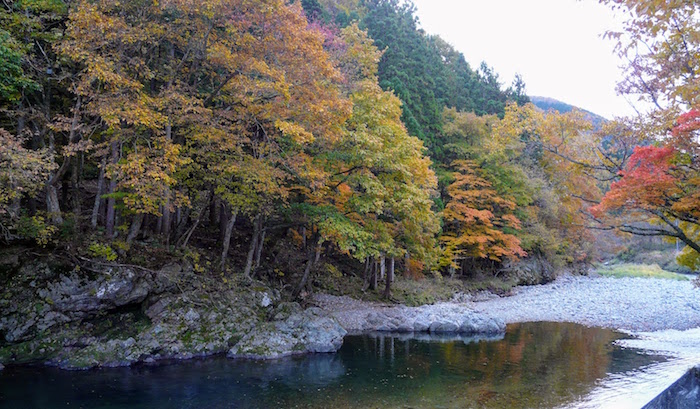
Hida is a snowy, heavily-forested region in the Japanese Alps. From 1692 on, Hida was not ruled by a local feudal lord – as most of Japan was – but directly by the national military dictatorship. This was fortunate. Hida was too steep and too high to grow enough rice to support a coterie of unproductive samurai lords. Some folks grew millet, but most hunted and gathered, cut timber, or sold charcoal. The peasants were allowed to pay their taxes not in rice (as folks did elsewhere) but in lumber. When the dictatorship collapsed and Emperor Meiji took control of the country, these special privileges disappeared. Meiji wanted to standardize Japan’s disparate and idiosyncratic local systems.
In 1868, a governor named Umemura Hayami arrived in Takayama – Hida’s capital and biggest town – to implement Meiji’s policies of standardization and modernization. He was only 27 years old. Umemura came from a samurai family and had a samurai’s arrogance and tunnel vision. Nonetheless, it seems he really did want to help the people of Hida and tried to make their lives better. He would fail.
Partly, Umemura was set up for failure. His predecessor was an interim governor who was supposed to hold down the fort during the transition between the dictatorship and Imperial rule. This interim governor promised to halve the annual rice tax Emperor Meiji would impose. Governor Umemura looked at the region’s balance sheets and realized there was no way he could fund his local government on half-taxes. So one of his first actions was to announce to a region that could barely grow enough rice to feed itself and wasn’t accustomed to giving rice to the government anyway that the peasants would have to offer up twice as much rice as they were expecting. Furthermore, previous governors had used subsidies to keep the price of rice low. This was especially important in years the lumberjacks let the forests recover and didn’t work. With all the building projects Emperor Meiji expected Umemura to carry out, the governor didn’t have the ready cash to also continue the rice subsidy. So a support system the lumberjacks (who couldn’t grow any rice at their altitude) had depended on vanished overnight.
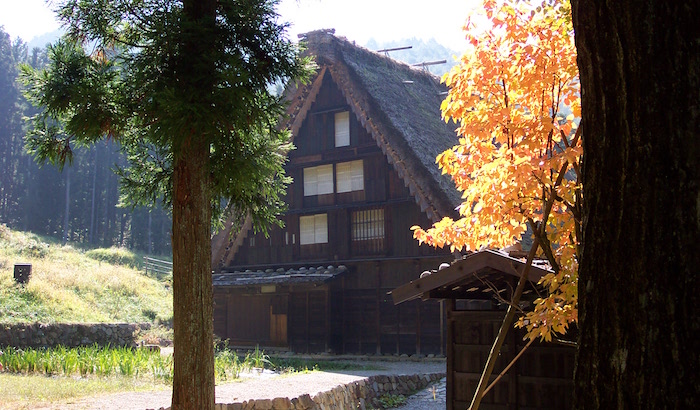
One of Umemura’s jobs was to standardize religious practices in Hida. All across Japan, Emperor Meiji was trying to establish a single, state-controlled religion: one that emphasized Japanese-ness and loyalty to the government. The core of this new religion was Shintoism, the indigenous polytheistic Japanese faith. But Shintoism had never been unitary; every town practiced a different version, and the primary god in one place might not even exist in the next. Worse (for Meiji and Umemura), Buddhism was popular in Japan and most peasants drew no distinction between Shinto deities (kami) and Buddhist deities (buddhas and bodhisattvas). Umemura had to stamp out Buddhism in a place that didn’t even see Buddhism as a separate religion.
The most popular strain of Buddhism in Hida was Pure Land Buddhism. To grossly oversimplify, Pure Land Buddhism teaches that Amitabha, the Buddha of Infinite Light, is happy to release you from the endless cycle of suffering and rebirth. All you have to do is recite the nenbutsu (a short phrase) just before you die, and you’ll be reborn in the Pure Land, where you’ll live forever in bliss. From an educated, theological standpoint, the above is entirely wrong. But from the standpoint of a regular peasant in Hida, Amitabha was a beloved, miracle-granting god who would send you to heaven when you died. When Umemura sent men into the countryside to smash the sacred images of Amitabha, folks could not understand why he would do such a thing.
A great story from The Mountain Folk (so maybe it didn’t happen quite this way, or maybe it did) concerns an ancient, venerable deity named Ichinomiya – one known in Hida to perform miracles. Umemura visited Ichinomiya’s shrine to determine what sort of deity it was. No one at the shrine could give him a straight answer. The deity was so old, and Buddhism and Shintoism so enmeshed, that nobody rightly knew whether Ichinomiya was a Buddhist deity or a Shinto one. Since the god was suspect, Umemura gave orders that the shrine be reconsecrated to Mito Rekkō. This was a deified Japanese philosopher, but nobody had ever heard of him. Folks suspected this ‘Mito Rekkō’ god might actually be a Christian deity. Was Umemura a secret Christian? The grumbling intensified.
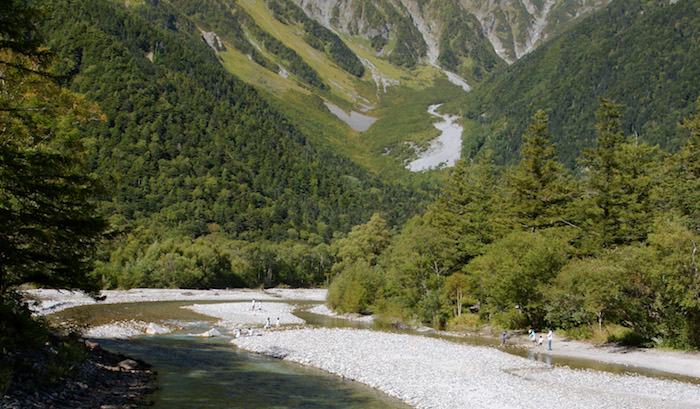
Governor Umemura worked ambitiously to enact a lot of other reforms. In no particular order:
– He ordered each village build a granary and fill it with grain. This would have been a smart hedge against famine in the lowlands, but in Hida, folks couldn’t grow enough grain to feed themselves, let alone fill a granary.
– He resented that the people could never quite scrape together enough for their taxes, but always seemed to have rice or money to support the local temples. He banned ‘excessive’ gifts to temples.
– He banned most mercantile endeavors. Instead of buying and selling from merchants, you had to buy and sell from Umemura’s Department of Commerce. Since he held a monopoly, prices always favored him. In a region that relied on a cash economy for subsistence, this policy was disastrous.
– He established new fire brigades loyal to him. The existing fire brigades had also served as police, and membership was a point of prestige. By rendering the old brigades obsolete, he angered a lot of influential people.
– He instituted puritanical sexual reforms. Hida had a fairly open sexual culture. Folks tolerated sex between unmarried men and women. Whether adultery was a big deal was left mostly to the couples involved. Umemura knew he couldn’t root out all sexual ‘deviancy’, so he sent a message by cracking down hard on the cases he knew about. In one instance, he tied a sixteen-year-old girl who’d slept with one of his married lieutenants to a bridge for three straight days. No word on what (if anything) happened to the lieutenant.
– It’s important to note that Umemura’s reforms don’t fit neatly into any modern economic or political framework. He established state control of trade in many sectors, yet withdrew the state from the market in others (like eliminating the rice subsidy). If his policies had an overriding theme, it was making Hida more like the lowlands without stopping to ask why Hida had operated differently. Japan needed reform, but the reforms that did well in the lowlands only hurt the people of Hida.
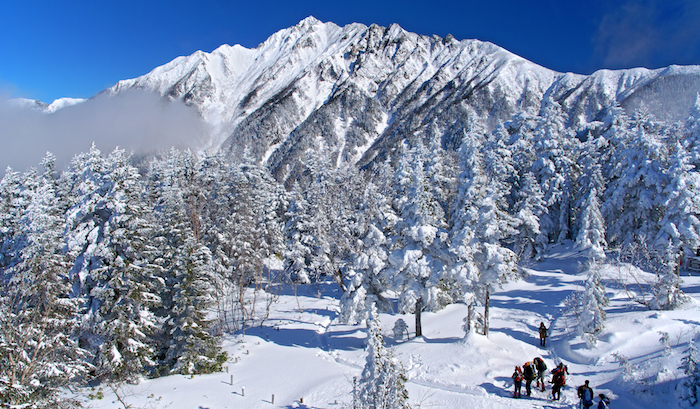
This brings us to our encounter on the road, a scene pulled directly from the book. Umemura heard that villages in the high mountains were conspiring against him. So he sent out a troupe of soldiers to arrest the instigators. The soldiers were lowlanders. As they pushed deeper into the mountains, things grew strange. The rare villages seemed almost swallowed up by the snow. There were no rice paddies, only lumberjacks and ox-drivers. When the soldiers came to their destination, their captain, Yoshida Chūtarō, fired a shot in the air to signal their arrival. His soldiers broke into peoples’ homes. The villagers huddled around their fires, chanting the nenbutsu, sure this was the end of the world. But there were only women, children, and old men. Men of an age to participate in a conspiracy were nowhere to be found. The soldiers moved from village to village, always the same. They yelled, they cursed, they kicked, but all the men were gone.
In the last village, Yoshida sought lodging and food for his men. In the biggest house, he found enough floorspace for his soldiers to sleep on, four blue-skinned women, and not a single grain of rice. He yelled and threatened, but the women assured him there was no rice in the village. Without the rice subsidy, no one could afford it. They grew millet, but that was all eaten months ago. Yoshida didn’t understand. What were these people eating? After considerable interrogation, a woman reluctantly brought out the only food in the house: hoya cakes. Hoya is a plant that grows in trees like mistletoe does. It tastes terrible and it’s poisonous. If you eat enough, it’ll turn your skin blue – hence the odd appearance of the women. More than that can kill you. But it was all the village had. A few soldiers choked down a few cakes, but most couldn’t stomach the hoya.
The women were eventually able to escape under the pretext of going to another village to find rice for the soldiers. The soldiers found the conspirators in a hunting lodge farther up the mountain. But regardless of the outcome of this scene, this village was clearly doomed. Without the rice subsidies, folks just couldn’t feed themselves up here. It’s easy to say that people shouldn’t be living up there anyway – but these people lived up here because the government wanted the lumber. Now they were inconvenient and Umemura was starving them out, unintentionally or no.

At your table, a (more-?) fictionalized version of this scene with the soldiers makes an amazing encounter on the road. As the party travels through the mountains (or whatever fictional setting you choose), they hear gunfire every so often. A storm is picking up that forces them to seek shelter. They find soldiers, folks chanting religious verses as if they expect to be killed, and a few brave women talking with the captain. Run it as a tense roleplay encounter. Can the PCs defuse the situation before the soldiers get ugly?
You can leave the scene at that if you want to. It works just fine as a solitary, standalone encounter. But maybe your PCs want to take this further. Maybe your players express curiosity about these ‘reforms’ that the women are complaining about. In that case, what we’ve learned from Ema’s book gives us everything we need to run an adventure. And that’s the key, right? You throw plot hooks in front of your players, see what they bite onto, and then make the next few sessions about that.
Maybe your fictionalized versions of the gods Amitabha and Ichinomiya are livid about the way they’ve been treated. Maybe the peasants want the party to help them smuggle in rice from the next province. Or the fire brigades are willing to work with anybody who can get them their old prestige back. Maybe the merchants might help undermine the Department of Commerce. Or the family of the girl tied to the bridge wants revenge. You’ve got this small, remote adventure site dense with plot hooks.
You’ve also got an interesting villain. Umemura has his head real far up his own ass, but he’s well-intentioned. He’s just too blinded by his upbringing and values to see that what he’s doing isn’t working. If the PCs do him a few favors so he trusts them, maybe they can talk him into altering his reforms.
You’ve got two other at-the-table bits here. First is the author himself, Ema Shū, who would make an interesting NPC in his own right. A seditious Marxist author posing as a (legitimately excellent) folklorist to collect information for his subversive book? Sign me up! The other is the idea of hiding information in plain sight. I’m always on the lookout for ways to get information to my PCs; you can only have them trek to a distant Great Library so many times before they get bored. Having the secret information be sitting in plain sight in a widely-available (but not widely-read) work of fiction is a neat twist. There may be some additional secrets in the book too, hidden as metaphor. The fictional peasants in Ema’s fictional book believed that Umemura had a hoard of embezzled tax money stashed away somewhere. Maybe there is no real stash of old tax treasure, but something else valuable is hidden where the treasure’s supposed to be.
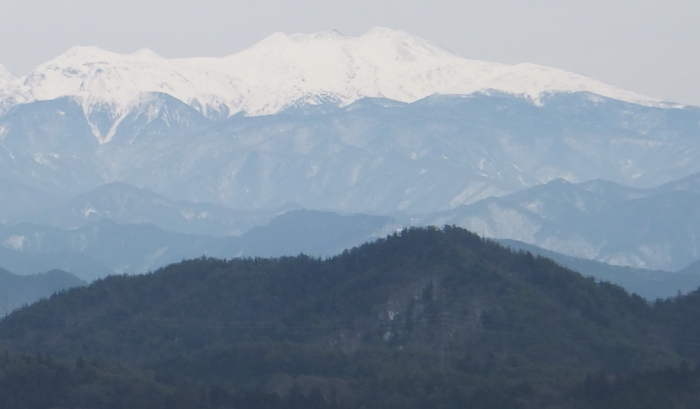
In real life, the unrest in Hida boiled over in 1869. While Umemura was away in Kyoto, Hida’s fire brigades organized a rebellion. They burned government facilities and the homes of Umemura’s elite supporters. The violence started in Takayama, but soon spread. Umemura rushed back from Kyoto. But after crossing the border into Hida, he and his retinue were stopped by rebels. Some were hunters carrying muskets. Umemura was shot, but managed to get away. He died in Tokyo waiting for the outcome of an investigation into how badly he’d screwed up.
For Ema, the author of The Mountain Folk, this was all an allegory for Japanese territorial ambitions on the mainland – and not a particularly subtle one. It was a story about a Japanese Imperial government going where it wasn’t wanted, imposing terrible suffering on the people there, and being outraged when those people fought back. Ema explicitly calls out early-Meiji actions like those in Hida as leading inevitably to “an offensive Japan made evil by a dogmatic Shinto-based military regime.” Ema survived the war. In later decades, he took advantage of a freer political climate to revise The Mountain Folk several times. Each revision ballooned its length with more historical details – and made the anti-fascist themes more clear.
Today, the rule of Emperor Meiji is often taught as being a productive era of reform and modernization. The events in Hida are a good reminder that modernization and reform always leave somebody behind. We in the West are staring down the barrel of this right now: when most food service, retail, and customer service jobs are replaced by machines, what will the people who currently do those jobs do for a living? Leaning into the question of who is left behind by modernization and reform will allow a canny GM to make an adventure inspired by The Mountain Folk transcend setting and fit into almost any campaign.
–
Source: Ema Shū’s “The Mountain Folk”: Fictionalized Ethnography and Veiled Dissent by Scott Schnell, Asian Folklore Studies (2006)






